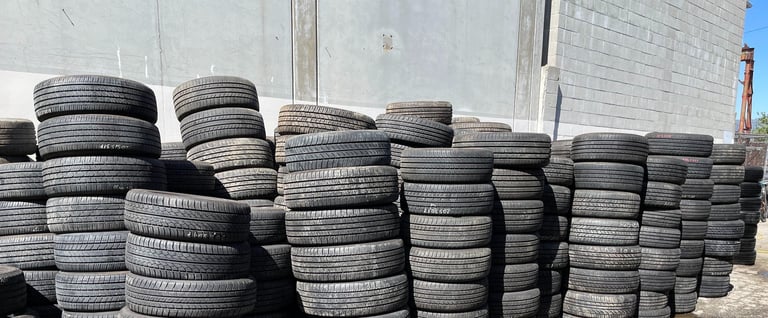Unlock Savings and Safety: Expert Tips for Choosing Quality Used Tires
Blog | Choosing used tires can be a savvy way to save money, but it's crucial to ensure you're not compromising on safety. Dive into our expert guide to discover the key factors you must consider when selecting high-quality used tires. From checking tread depth and looking for damage, to understanding wear indicators and verifying tire age, we've got you covered with all the tips and tricks to make an informed decision. Learn how to navigate the used tire market safely and effectively, ensuring a smooth and secure ride for your vehicle.
USED TIRES
George D.
7/7/20242 min read


As Henry Ford once said, "Quality means doing it right when no one is looking." Learn how to navigate the used tire market safely and effectively, ensuring a smooth and secure ride for your vehicle.
How to Choose Used Tires for Your Car: A Guide for Vehicle Owners
Selecting used tires can be a great way to save money, but it’s important to approach the process with due diligence. This guide will help you understand what to look for when buying used tires to ensure safety and longevity for your vehicle.
1. Tread Condition
The first thing to check is the tread condition. The tread is crucial for road grip and vehicle stability. Ensure that the tread depth is adequate for safe use. A recommended tread depth is at least 4 mm, although the minimum legal depth is 1.6 mm.
2. Absence of Damage
Inspect the tires for cuts, punctures, and other damages. Even minor cracks or damages can lead to serious issues later on. Pay special attention to the sidewalls, as they are prone to damage.
3. Uniform Wear
Check that the tire wear is even across the surface. Uneven wear may indicate suspension problems or improper wheel alignment, which could lead to additional repair costs.
4. Tire Age
Tires have a limited lifespan, typically around 6-10 years from the date of manufacture. Even if the tread appears sufficient, old rubber loses its properties and becomes less safe. You can find the manufacture date on the tire sidewall in the form of a code (e.g., "2518" means the 25th week of 2018).
5. Tread Wear Indicator
Most modern tires come with Tread Wear Indicators (TWI). These indicators are small ridges within the grooves of the tread that become visible when the tire wears down to the minimum safe tread depth. If the indicators are flush with the tread surface, the tire must be replaced.
6. Rubber Aging Indicator
Some tire manufacturers include rubber aging indicators that change color as the rubber ages. This visual indicator can help determine the condition of the rubber itself. If the indicator shows significant aging, avoiding using those tires is best.
7. Seller Reputation
Buy tires from reputable sellers or specialized shops. This reduces the risk of purchasing unsafe or low-quality tires. Check reviews and ensure the seller offers some form of guarantee.
8. Seasonality
Ensure the tires you’re buying match the current season. Summer tires differ from winter tires in rubber composition and tread design, affecting their performance and safety.
9. Compatibility
Verify that the tires are compatible with your vehicle. Check the size, load index, and speed rating, which are specified in your vehicle’s manual and on the tire sidewall.
Conclusion
Buying used tires can be economically beneficial, but it requires careful consideration. By following these guidelines, you can select quality and safe tires that will serve you well and ensure safety on the road.
George's Alignment & Brake Service
Contacts:
Tel: +1 818 855 6545
Operation hours:
Mon-Fri: 10am - 5pm Sat: 9am - 5 pm
Service areas:
Calabasas Canoga Park Chatsworth Encino Granada Hills Hidden Hills Lake Balboa Northridge
Porter Ranch Reseda Sherwood Forest Tarzana Van Nuys West Hills Winnetka Woodland Hills
